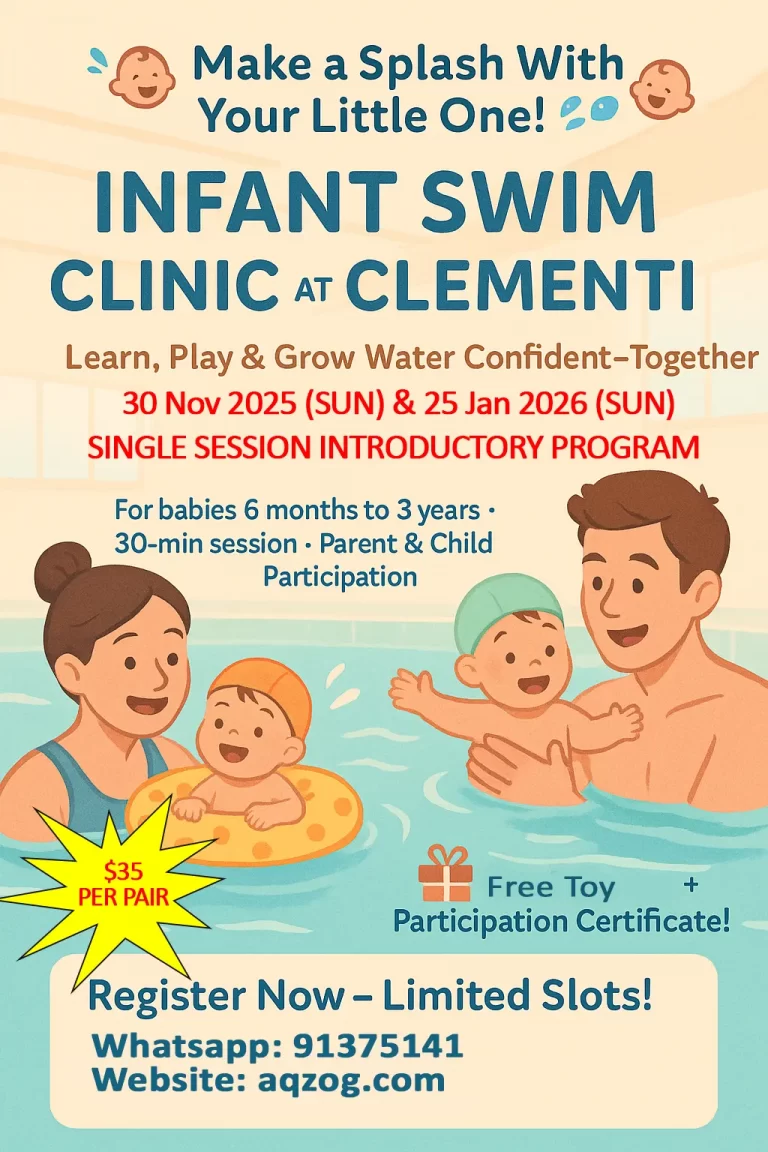Lightning Alert: Ensuring Safety During Swimming Lessons in Singapore
In SportSG pools across Singapore, different weather conditions can trigger a Lightning Alert, leading to temporary pool closures for safety. Here are a few key types of weather conditions that can result in such alerts:
1. Thunderstorms with Lightning
- The most common cause of lightning alerts.
- Pools are closed when there is a high risk of lightning strikes within the vicinity.
- Swimmers and spectators must clear the pool area immediately.
2. Heavy Rain with Poor Visibility
- Even without lightning, pools may close if visibility is severely reduced.
- Lifeguards need to ensure they can see all swimmers for safety.
3. Strong Winds with Storm Risk
- High winds can be an early sign of approaching storms.
- Flying debris or falling objects may pose hazards around the pool area.
4. Nearby Lightning Activity
- SportSG pools follow the NEA Lightning Warning System.
- If lightning is detected within a certain radius, pools will be closed as a precaution.
5. Extreme Weather Events
- Unusual weather, such as tropical storms, monsoons, or heavy downpours, may trigger extended closures.
During a Lightning Alert, SportSG pools usually remain closed for at least 30 minutes after the last observed lightning strike before reopening. Swimmers should always check SportSG’s Pool Weather Advisory before heading out.
Even on a sunny day, a lightning alert can be triggered if there are nearby storm clouds or unstable atmospheric conditions. In Singapore, the Lightning Warning System detects electrical activity in the atmosphere, and alerts are issued even if the sky looks clear. This is because lightning can strike up to several kilometers away from a storm, sometimes called a “bolt from the blue.”
For outdoor swimming or sports events, it’s always good to check real-time weather updates and adhere to safety protocols when a lightning alert is issued. Do you usually have a contingency plan for swim classes when this happens?
Contingency Plan for Swimming Classes – Wet Weather Program
Objective
To ensure continuous learning and engagement for students when swimming classes are disrupted due to wet weather conditions, such as thunderstorms or heavy rain, while maintaining safety and educational value.
Implementation Guidelines
- Monitor Weather Conditions:
- Use official weather sources (e.g., NEA’s weather app) to check forecasts before and during lessons. Click here to check weather in Real Time.
- If lightning alerts or heavy rain are detected, move to an alternative indoor location.
- Alternative Indoor Venue Options:
- Multi-purpose halls, sheltered areas, or classrooms near the swimming facility.
- Wet Weather Activities & Lesson Plans
1. Music Note Familiarization and Discovery
- Introduce rhythm and beats using simple musical notes to enhance coordination.
- Relate rhythmic movements to swimming strokes, improving timing and breathing patterns.
2. Swimming Stroke Explanation & Dryland Drills
- Breakdown of stroke mechanics using videos or visual aids.
- Practice arm movements, breathing techniques, and kicking drills on land.
- Use resistance bands to simulate water resistance for strength training or Jump Rope for enhance coordination and foot work.
3. Survival Skills Education
- Demonstrate and practice survival floating and treading techniques on mats.
- Teach emergency responses, including how to assist a distressed swimmer using floatation aids.
- Role-playing rescue scenarios with throw bags or improvised floatation devices.
- Types of Throw Rescue and Method
- How to wear a life jacket in less than 5 sec Challenge.
4. SwimSafer Theory & Quiz Preparation
- Cover key SwimSafer topics, such as water confidence, aquatic knowledge, and underwater skills.
- Conduct interactive quizzes and discussions to reinforce water safety concepts.
- Guide students on how to complete SwimSafer theory assessments.
5. Physical Conditioning & Flexibility Training
- Stretching exercises for injury prevention and muscle flexibility.
- Core and leg strength exercises relevant to swimming, such as planks and flutter kicks.
6. Games & Interactive Activities
- Relay races using swimming movements on mats.
- Storytelling or group discussions about real-life water safety experiences.
Communication Protocol
- Irregardless of weather, Group Classes are always on going unless the coach cancel the session.
- There will be no notification as the Weekly Group Classes are abide by the terms and conditions statein. Read here for our Terms and Conditions.
Conclusion
By having a structured wet weather program, students can continue learning essential swimming skills, water safety, and physical conditioning even when pool access is restricted. This ensures progression and engagement regardless of weather conditions.



